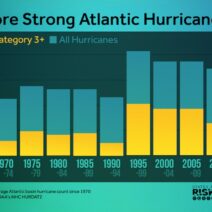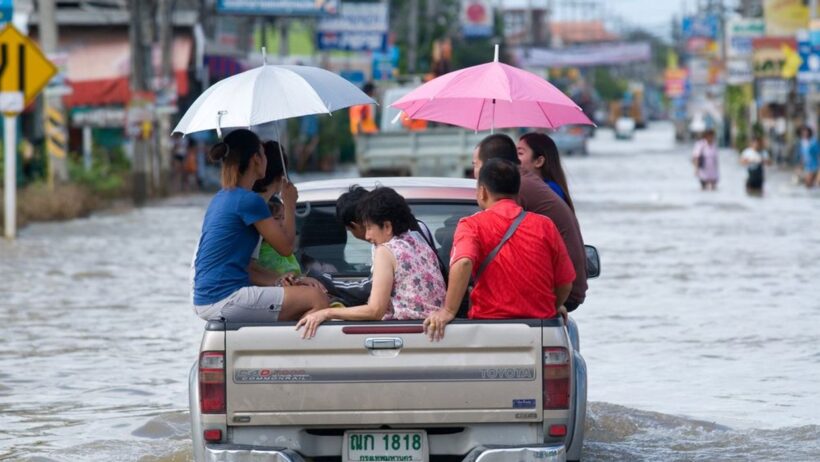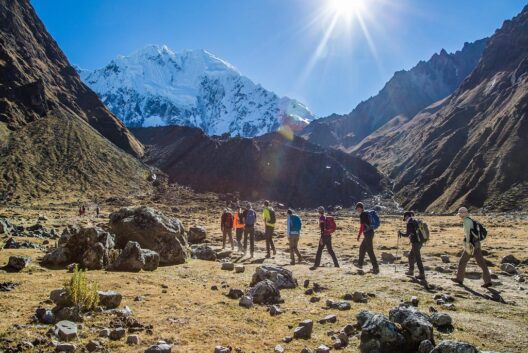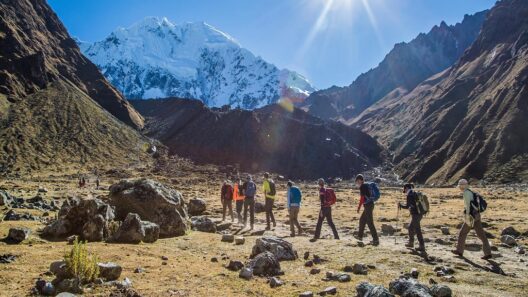Climate change has increasingly permeated discourse across the globe, illuminating the dire consequences of anthropogenic influences on the environment. Viewing climate change through the lens of a density-independent disaster sheds light on its pervasive reach, affecting communities irrespective of their population density. While traditional environmental disasters, such as floods or wildfires, can be influenced by local demographics, the ramifications of climate change are uniformly felt, creating a ubiquitous crisis that transcends geographical and demographic boundaries.
To understand the concept of density independence, one must first delineate it from its counterpart, density dependence. Density-independent disasters are those whose impacts are not modulated by the size or density of a population. In contrast, a density-dependent disaster’s consequences might magnify as the population grows, leading to more severe outcomes. Climate change, however, disrupts ecosystems and human livelihoods without regard to population size. Its effects proliferate through warming temperatures, rising sea levels, and intensified weather patterns, affecting urban and rural areas alike.
The primary driver of climate change is the accumulation of greenhouse gases—principally carbon dioxide, methane, and nitrous oxide—in the atmosphere. These gases are released primarily through human activities such as fossil fuel combustion, deforestation, and industrial processes. Their presence in the atmosphere not only warms the planet but also alters weather patterns, leading to unforeseen extremes. For instance, a relatively small increase in global temperature can result in profound shifts in precipitation trends, impacting agricultural production regardless of the population densities in farming communities.
Consider the agricultural sector, a critical nexus between climate change and food security. Droughts and floods, while varying in their devastation based on geographic factors, operate independently of how many farmers reside in a given area. An arid landscape may yield severe crop failures irrespective of whether it supports a densely packed urban center or a remote farming community. This illustrates the disconnect between population dynamics and environmental stressors—climate change-induced droughts will decimate crops and food supplies as surely in a crowded metropolis as in a rural enclave.
Moreover, the interaction between climate change and human health exemplifies this catastrophe’s indiscriminate nature. The spread of diseases, exacerbated by changes in temperature and humidity, manifests widely in both populous cities and sparsely populated regions. Malaria, dengue fever, and other vector-borne maladies are emerging in new territories, unconfined by demographic variables. Public health institutions in overpopulated urban areas may struggle to contain outbreaks, while rural health systems, often under-resourced, can collapse under the strain.
Climate change also exacerbates socio-economic inequalities. Disadvantaged communities, regardless of their density, are often the first and most heavily impacted by climate upheaval due to limited access to resources and adaptive capacity. The situation is particularly precarious in developing regions, where economic dependency on climate-sensitive activities like agriculture or fishing makes the impacts of climate change feel particularly acute. Rising sea levels threaten coastal communities globally; however, wealthy nations might possess the financial clout necessary to mitigate these risks while poorer nations face existential threats merely due to their geographical position.
The ramifications of climate change extend beyond immediate environmental degradation. They permeate economic stability, food security, and societal structures, enveloping diverse communities in a shared menace. One need only look to extreme weather events to grasp the density-independent nature of these disasters. Hurricanes, tornadoes, and heat waves wreak havoc indiscriminately, tearing apart both economically affluent and impoverished regions—often leading to displacement and humanitarian crises. When Hurricane Katrina struck New Orleans, the compounded effects of poor infrastructure, poverty, and systemic disenfranchisement highlighted how both urban and rural settings can exhibit vulnerability in the face of climate change.
Conversely, adaptation and resilience strategies must also account for the density-independent character of climate change. Communities need to establish frameworks to withstand future climatic challenges. This involves infrastructural upgrades, public health initiatives, and sustainable agricultural practices that can withstand variability in weather patterns. Achieving such resilience requires active involvement from multiple stakeholders, spanning local governments, non-profits, and global organizations.
Communication is paramount when discussing climate change. A universal understanding of its impacts as a density-independent phenomenon will galvanize action across diverse sectors of society. Public awareness campaigns, educational endeavors, and grassroots movements are essential in disseminating knowledge regarding climate-related risks. Such initiatives are particularly crucial in areas historically underserved by climate education, thereby ensuring all voices are represented in the overarching dialogue about our planetary crisis.
In this context, the exploration of innovative technologies and sustainable practices plays a vital role in combating climate change effectively. Carbon capture technologies, renewable energy systems, and climate-smart agriculture must take precedence in mitigating the damage unleashed by climate shift. These innovations are not merely pivotal for high-density urban centers; they belong in every community, whether bustling with activity or quietly nestled away from the limelight.
In summary, climate change is a density-independent disaster, uniquely influencing ecosystems, human health, and socioeconomic stability without regard for population densities. Its effects are insidious, penetrating the fabric of society and exacerbating inherent inequalities. Recognition of its indiscriminate nature is essential for both understanding and addressing the myriad challenges it poses. As we collectively navigate an uncertain future, it becomes paramount that we adopt an inclusive approach to climate action—one that fosters resilience and equity for all communities, no matter where they lie on the population density spectrum.







